
Update: I have switched from these cases to the PowerPax Storacell caddies. Read why I prefer the PowerPax Storacells in this post.
My latest piece of photo equipment cost me less than five bucks. It isn’t a lens, a flash or a custom filter. To tell the truth it isn’t exactly a piece of photo gear at all. Yet, my photography will be the better because of it.
You might not think a battery organizer is a very exciting item, but it eliminates the hassle of keeping AA batteries in order. Any time I can streamline my photography assignments, I get excited.
AA batteries are a photographic necessary if you shoot with electronic flash. I use rechargeable NIMH batteries and I always try to have several freshly charged sets in my camera bag. I’ve tried numerous methods to keep my AA batteries ready for use, but I’ve never been very satisfied with any of them. Until now.
I found some nice nylon plastic battery cases on ebay. These cases hold four AA cells, each battery separated from its neighbor by a nylon partition. I got six of them for under five dollars including shipping. That is sufficient storage for 24 batteries.
I like these cases for several reasons.
It is easy to tell charged and discharged batteries apart
Whenever I charge a set of batteries, I place them into a plastic case. Whenever the batteries in one of my flash units become exhausted, I drop them loose into a pocket on my camera bag. By maintaining this routine, I always know that the batteries in the plastic cases are charged and ready to use. And when I return from an assignment, I know that the loose batteries need to go on the charger. It is also easy to glance through my bag and determine how many charged battery sets IÂ have available.
Batteries in a case don’t get lost
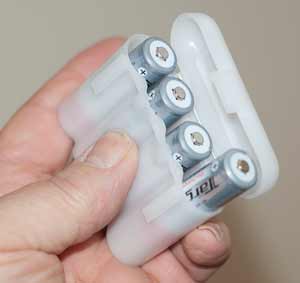
When I am shooting an event, there are times when I need to change batteries quickly. Seconds count if the batteries the my flash start to fail during the middle of the action. If batteries are loose in the bag, I find myself wasting precious seconds rooting around trying to find enough fresh batteries to power the flash. Often I can only find three and have to dig through various filters, sync cords, tripod plates and cleaning brushes to unearth a fourth cell. This doesn’t happen with batteries in cases. The cases are much easier to locate in my my bag, and when I fish a case out I know there is an entire set of four batteries inside.
I can quickly move spare batteries when I swap equipment between bags
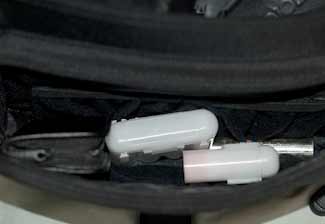
I use several different camera bags, depending on how much equipment I need for a particular assignment. Moving lenses and camera bodies between bags is a simple matter, but I take extra care to make sure I don’t forget any important accessories. Storing batteries in cases simplifies the process of making sure that all the batteries get transferred between bags.
Don’t underestimate the little things. A battery case might seem insignificant. If, however, it makes the difference between capturing or missing an important shot, a simple cell case could be one of the most important things in your gadget bag.






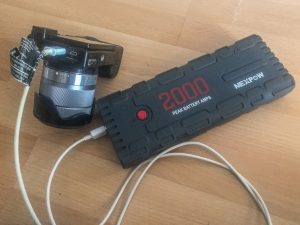

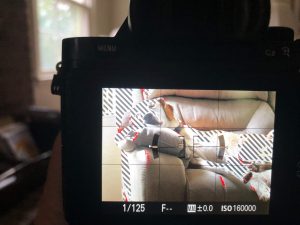
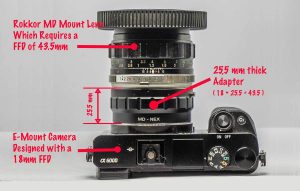



And where can these be purchased?
You really should keep the batteries together in sets (of 4 for most flashes) and not mix them up. That way, if you have 1 or 2 that aren’t keeping their charge any more, you don’t bring down the total charge available in what would otherwise have been a good set.
Either that, or use a good charger or meter and occasionally check which ones are on their way to bunny heaven.
Hi dr4gon:
As I mentioned, I got my cases on ebay. I didn’t list the seller, because I wasn’t sure if the seller still had stock to sell. Just go to ebay and search for AA battery holder. You will get a whole list of sellers. There are many different styles and designs. I suggest looking for cases that will hold four cells, as most flash units are designed to use four batteries. Look for the best deal, with free shipping if possible.
If you don’t want to go the ebay route, try Meritline.com. They have different style of case than I have, but it looks like it would work well. I have bought other items from Meritline, and they have always given me quick service and free shipping. I hope that helps.
Hey Bob,
I appreciate your comment. I used to mark my batteries in sets of four to keep them together. I hoped by charging and using the batteries in sets they would maintain the same relative health. It never seemed to work that way. Over time, one or two cells in the set would stop taking a charge. So I would eventually mix good cells from several sets to make one good one. I still try to keep the cells together in sets, but I’m not overly fanatic about it. The battery cases help in this regard, as they make it simple to keep cells together in a set. I just remember to drop the exhausted batteries in different pockets in my gadget bag. That way, I keep the cells together.
Thanks again. Tom
I used to carry a digital (that took AAs) as my “in-car” camera. I ended up buying a big batch of NiMH batteries, and I settled for an extra large size memory stick case holder–which holds a dozen AA cells under elastic, mesh pockets–and also a plastic clam shell battery case, which can go in the pocket. I used have some articles that mentioned high-end chargers that check battery states. Wish I could post them but unfortunately I’ve lost the bookmarks.
I’ve found that certain brands of rechargeables have their shortcomings. Some low-discharge types I’ve bought made me wonder how bad were the fast discharge variants! I use the good ones for cameras and strobes, and the not-so-good ones (of which I have many) for winders–where a couple batteries with low voltage aren’t going to stop the works.
I’m not a press photographer, so there are many places where a strangely-shaped bag would arouse suspicion. When going light, small flat battery cases are excellent because they fit in the pocket like a wallet.
Thanks. I had been thinking about some cases before you wrote this, but didn’t see any that were like the ones you had (which I like). But, a case is a case, lol…. not going to help me take better pictures or anything.
Strobist’s David Hobby likes to keep his in 4’s to keep them evenly charged/discharge. Eventually, one will go bad and then you can split it into a group of 3 or 2 + 1 (for your pocket wizards, flashlight, remote controls, whatever).
Great job on the blog, it looks outstanding. I am going to save it and will make sure to visit weekly
I would like to stay in touch, What is your facebook page?
http://cgi.ebay.com/ws/eBayISAPI.dll?ViewItem&item=140457499974&ssPageName=STRK:MESELX:IT
If your after a BATTERY STORAGE CASE/POUCH, then i think you may be interested in this product on ebay.
ZIP-UP WALLET for 8x AA or AAA batteries NiMH/NiCd etc
http://cgi.ebay.co.uk/ws/eBayISAPI.dll?ViewItem&item=360304630586&ssPageName=STRK:MEWNX:IT
Usefull post would it be OK if i translate into Italian for my sites readers? Thanks
Thanks. I had been thinking about some cases before you wrote this, but didn’t see any that were like the ones you had (which I like). But, a case is a case, lol…. not going to help me take better pictures or anything.